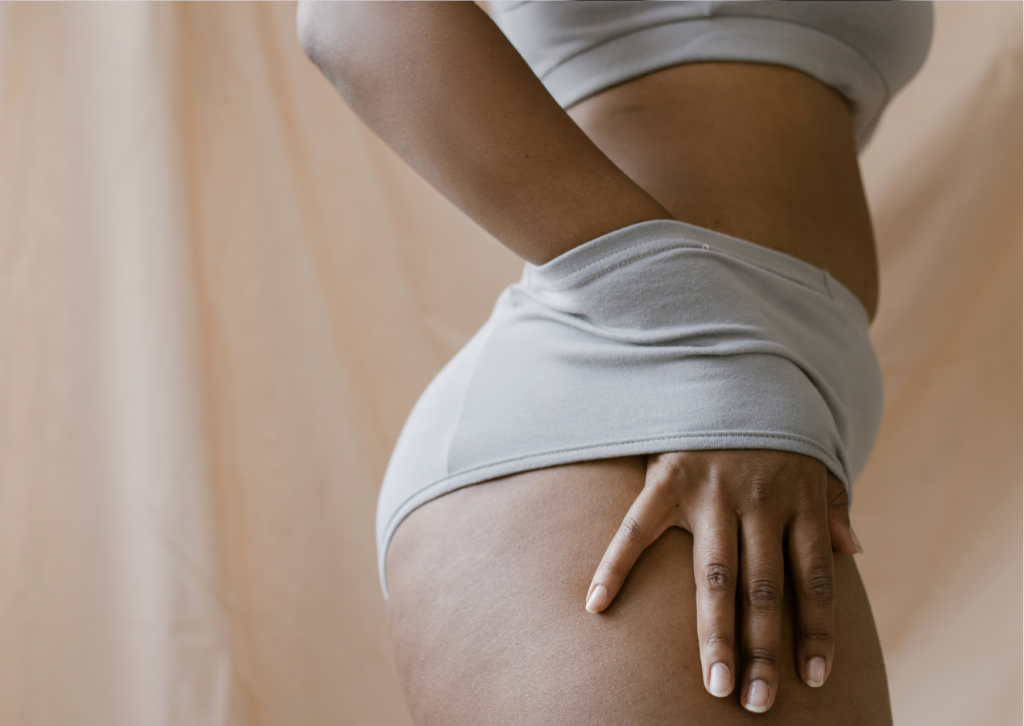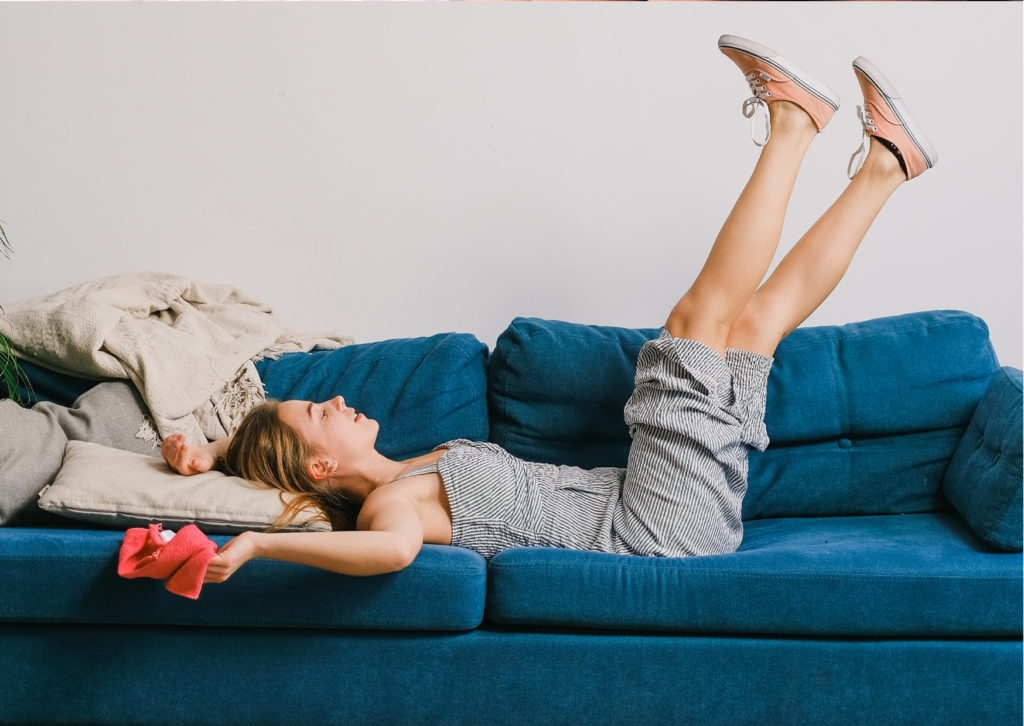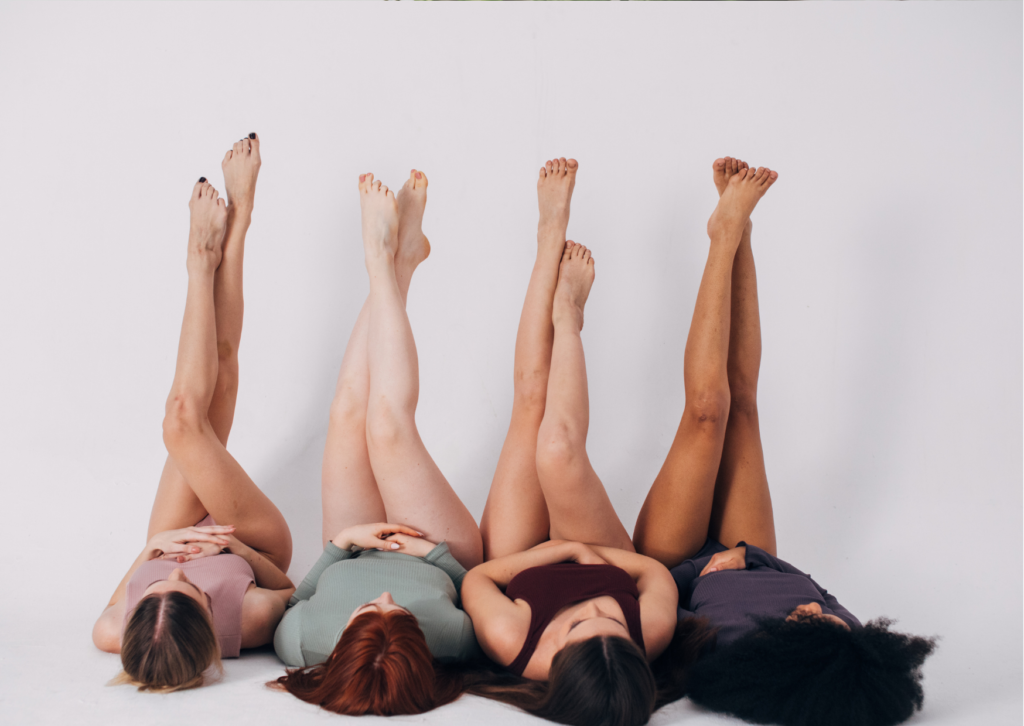The most important facts in a nutshell
- The female cycle consists of a total of four phases: Menstrual phase, follicular phase, ovulatory phase and luteal phase.
- Each phase has its own hormonal characteristics and can have different effects on your body and moods.
- By listening to your body and taking time for relaxation and self-care, you can better manage your daily life with your cycle.
Blood, pain, mood swings and cravings. The period is complex and fascinating at the same time. But the female cycle is even more complex. Menstruation is only one of a total of four hormonal phases of the female cycle. In this article we will dive deeper into the individual hormonal phases. Find out what’s going on in your body and how you can use your cycle to your advantage.
The female body is a real miracle. Month after month, women go through a complex hormonal cycle that can affect their lives and moods. In this article we will look at the four phases of the female cycle and show you how these phases affect your body and moods.
The female cycle and its hormonal phases.
The female cycle has a total of four phases – so far so good. But what does that mean exactly? The menstrual cycle is a constantly repeating process in the female body. During this time, it prepares itself for a possible fertilisation and there is a literal up and down of the most diverse hormones. The hormones oestrogen, progesterone, FSH (follicle stimulating hormone), LH (luteinising hormone) and testosterone play the main role.
In a nutshell: The cycle begins with menstrual bleeding, i.e. the shedding of the uterine lining (a wonderful long word). Immediately afterwards, the body builds up a new mucous membrane and several follicles mature in the ovaries. What then follows is the climax of the female cycle – ovulation. An egg is taken up from a mature follicle in the fallopian tube and a corpus luteum is formed. The lining of the uterus completely rebuilds and can now implant a fertilised egg. However, if the egg is not fertilised, the corpus luteum regresses and the lining of the uterus is rejected. The cycle starts all over again. Here we go again – Yeah!
But what exactly happens in the individual hormonal phases and what are the typical symptoms or characteristics? Let’s start with the most well-known phase – the menstrual phase. How everyone loves them!
Phase 1: The menstrual phase
Or even “The week when you could eat anything”.Okay, we all know this week all too well. The menstrual phase or period is the first phase of the female cycle and lasts about five to seven days. Within this phase, your hormone levels of oestrogen and progesterone are very low and your uterine lining is shed – the bleeding we all know well occurs. This phase of menstruation is also known as winter. It is the phase when we usually retreat, rest within ourselves and prepare for spring. You often feel tired, have cramps and mood swings. This week, as we all know, you can eat anything that comes your way. Sweets, chocolate, crisps – you name it!
But light exercise and movement can also do you good during this time and help with menstrual pain. An iron-rich diet can help you make up for the loss due to bleeding. If you don’t eat enough iron, it can lead to tiredness, low mood and bad temper.

Phase 2: The follicular phase
Or “The week when you could conquer the world”. After the menstrual phase, you move on to the follicular phase, which lasts about 10 to 14 days. During this phase, the level of oestrogen in your body increases. Your uterine lining thickens and new follicles can develop in your ovaries. During this phase you feel full of energy, creativity and drive. You feel that you are becoming yourself again and you want to be around people again. You feel like the world is your oyster.
This is why the follicular phase is also called the spring phase. It is a time of new beginnings, growth and regeneration in your female body – almost like the real spring. You blossom again with time and now have more strength to solve problems and develop strategies.
Phase 3: The ovulation phase
Also known as “The week you should take a few days off”. The ovulation phase, also known as the ovulation phase, is the third phase of the menstrual cycle. It also usually lasts only one day. During this phase, the egg moves from the ovary through the fallopian tube into the uterus and is ready for fertilisation for a short time. It is often called summer because the body experiences a surge of hormones during this time. For you, this means you feel more energetic and generally in a better mood. Women often feel more confident and sexually attractive during this time, and your senses are on full blast. Your nose is more sensitive, your sense of taste improves and your creativity seems to explode. During this time you can do one thing above all: Go out with people. You are most eager to meet new people. You can also do your strength training and cardio because you are full of energy and strongest.
Tip: If you want to get pregnant, this is the best time. The egg can be fertilised and implant in the womb.

Phase 4: The luteal phase
Or in other words: “The week when I need Netflix, chocolate and a good book”.The last phase of the cycle is the luteal phase – it usually lasts 10 to 14 days. During this time your progesterone levels rise to prepare the lining of the womb for a possible pregnancy. It is perfectly normal to feel uncomfortable and more sensitive during this week. Many women are prone to mood swings and PMS (premenstrual symptoms) during this time.
This is why the luteal phase is often described as autumn, because just as the leaves fall from the trees in autumn, the lining of the uterus begins to shed. The hormone progesterone is also higher during this phase, which can mean that you might feel more irritable or tired – similar to the dark and cold days of autumn. You might need a little more rest and relaxation than usual – and just Netflix, chocolate and a good book.
The female body is not only a miracle, but also as individual as every woman. Every body is different and every woman has her own cycle. But one thing is clear, everyone is perfect in their own way.
This saves a lot of tampons and panty liners over time – and therefore also waste. To make sure you can reuse them for as long as possible, you should boil them every time before and after your period and rinse them with cold water during your period before using them again.
Want to know more about your cycle? Sign up for our newsletter and don’t miss any more news.



